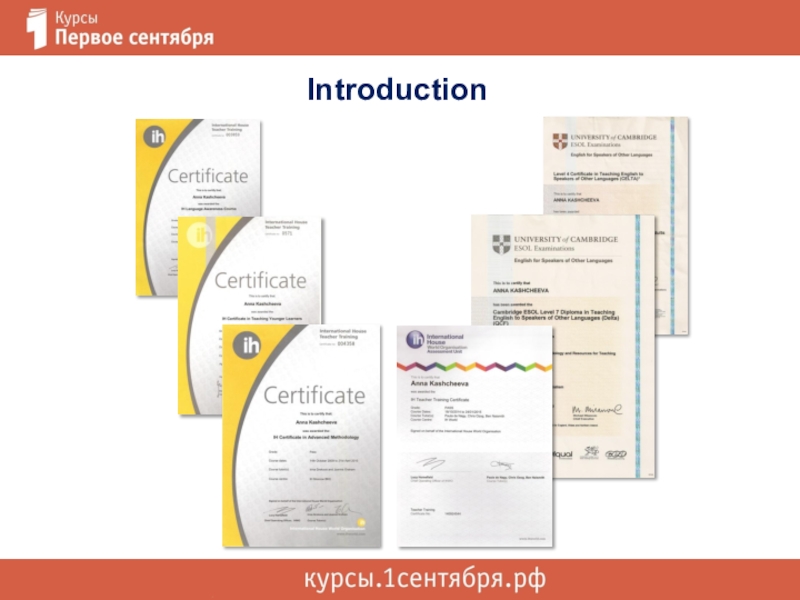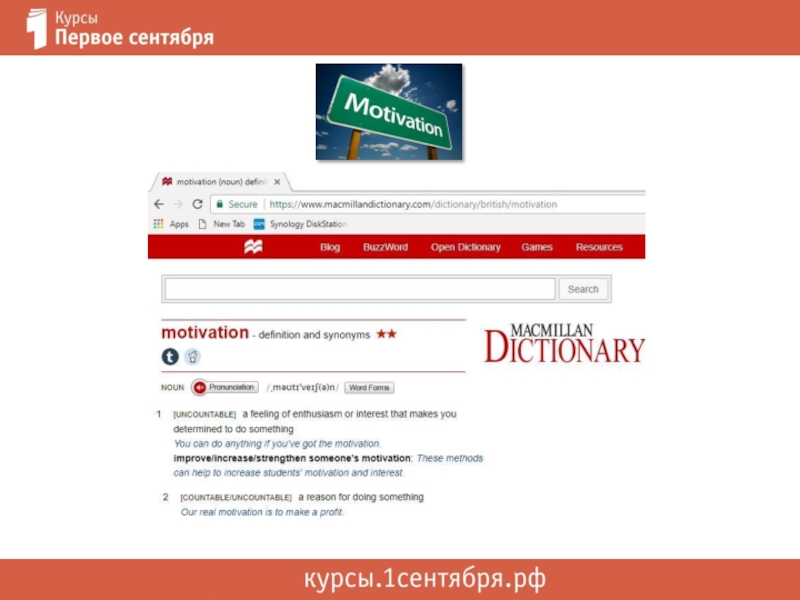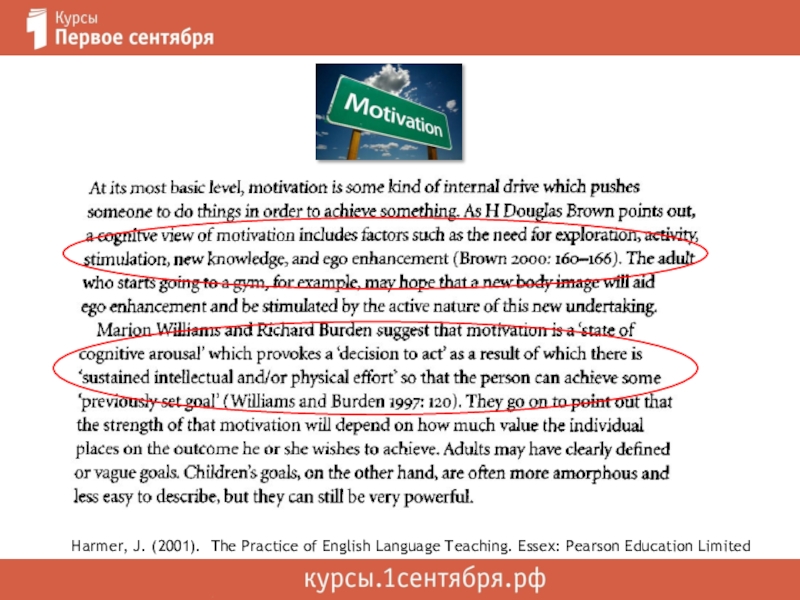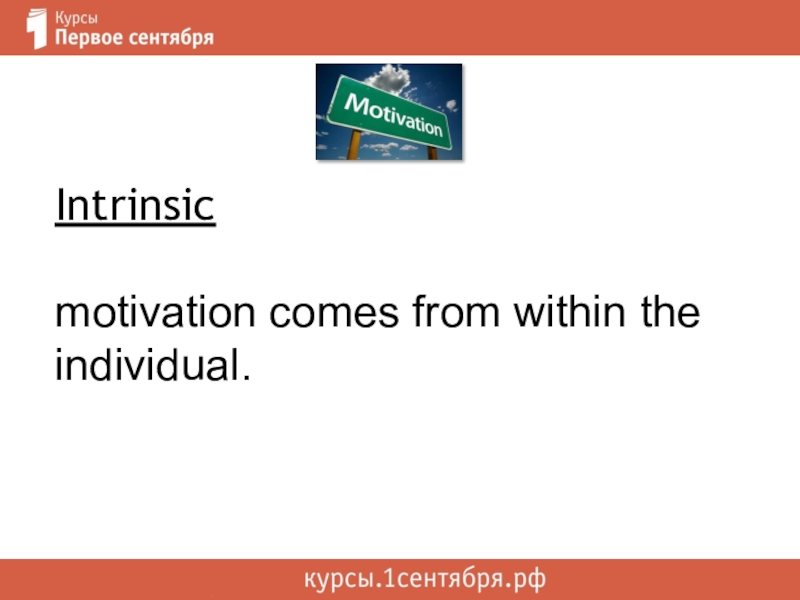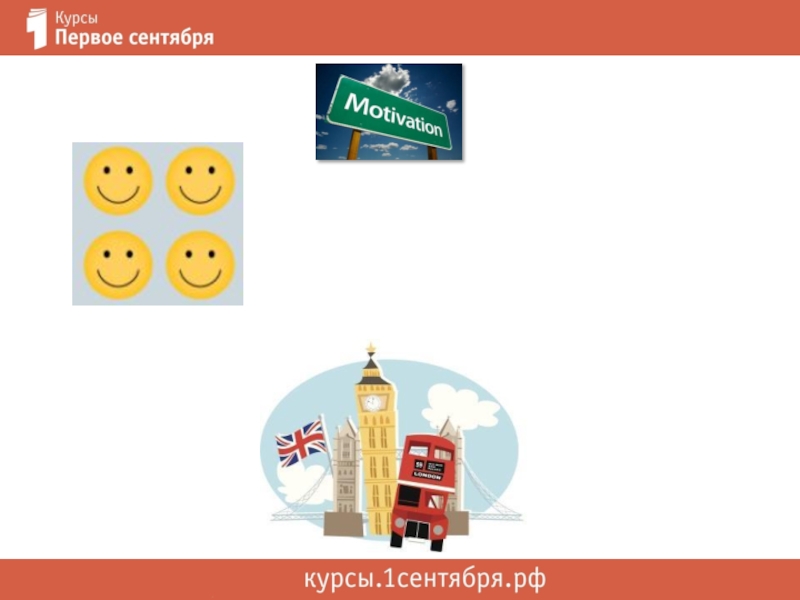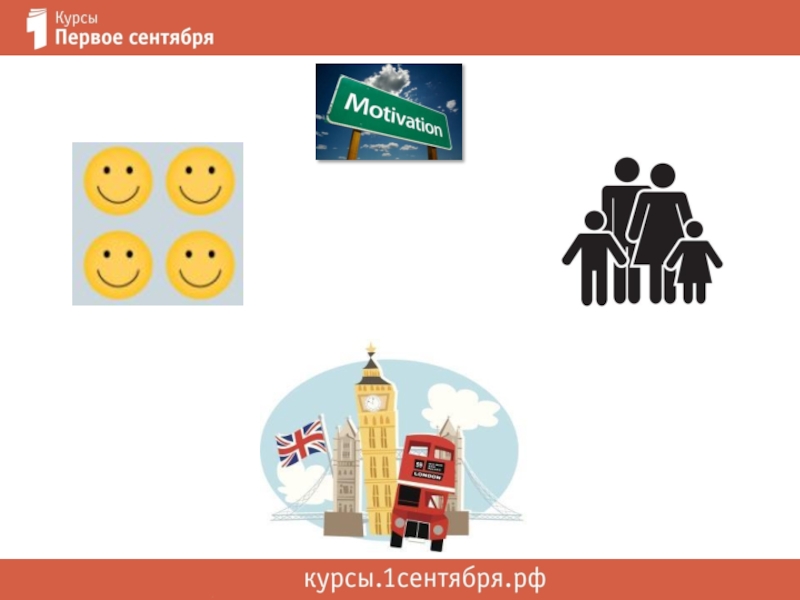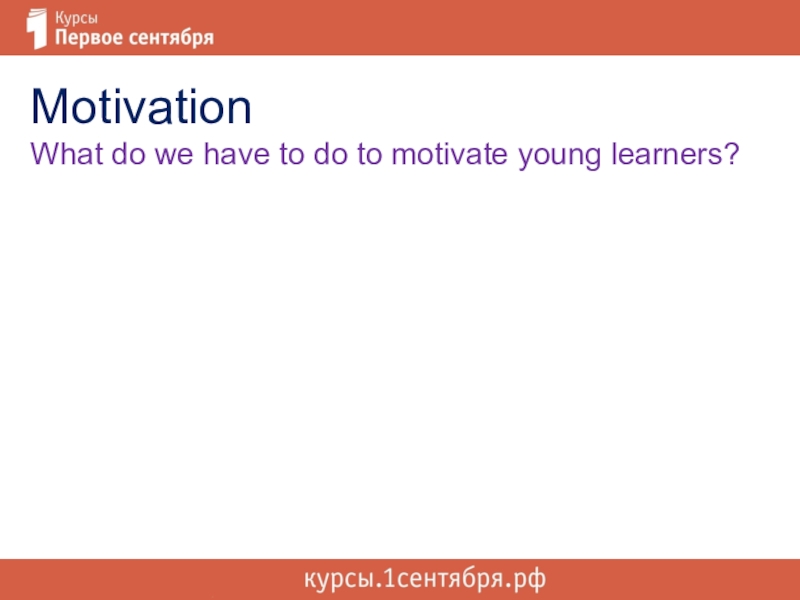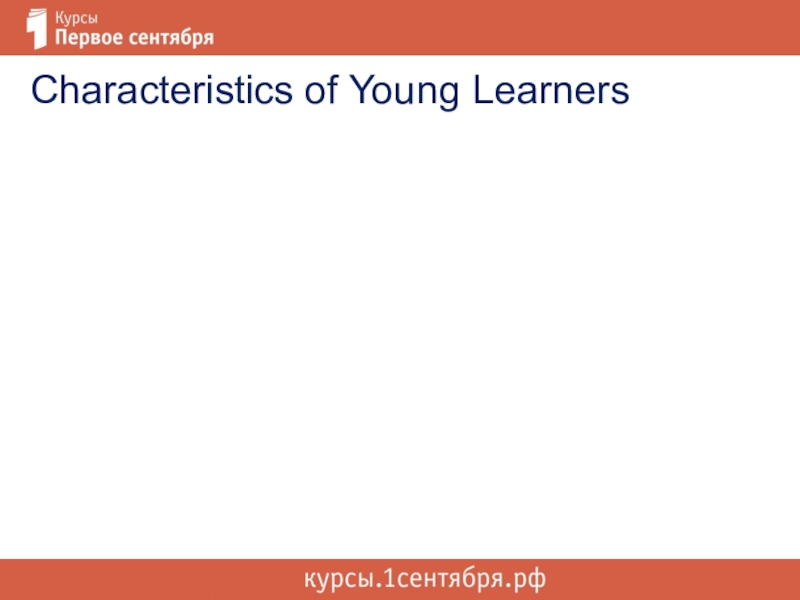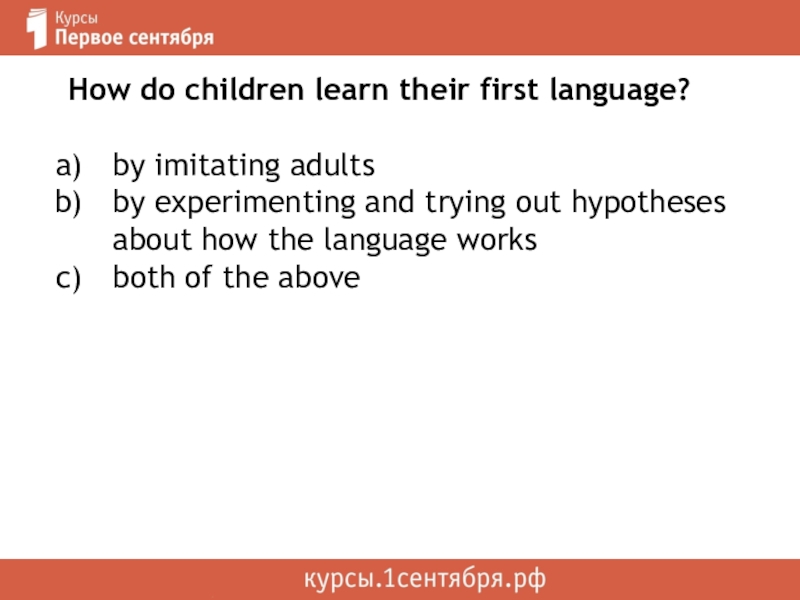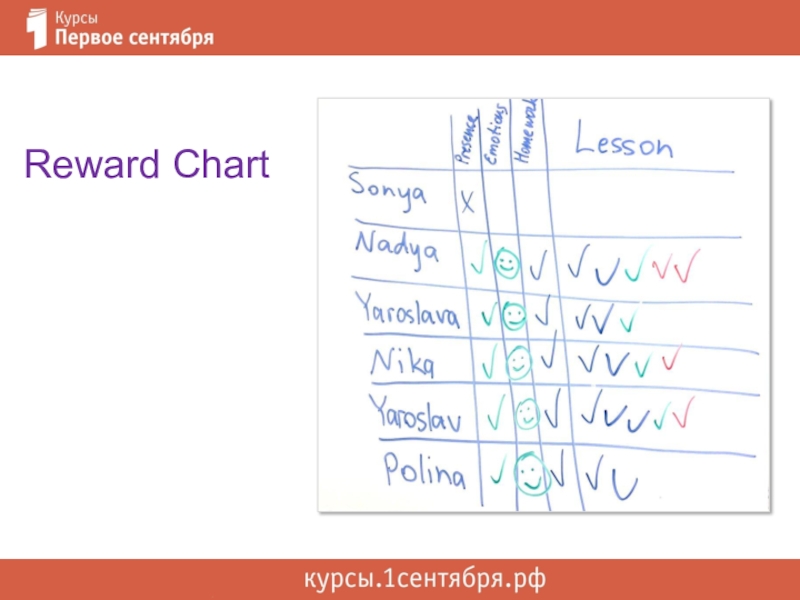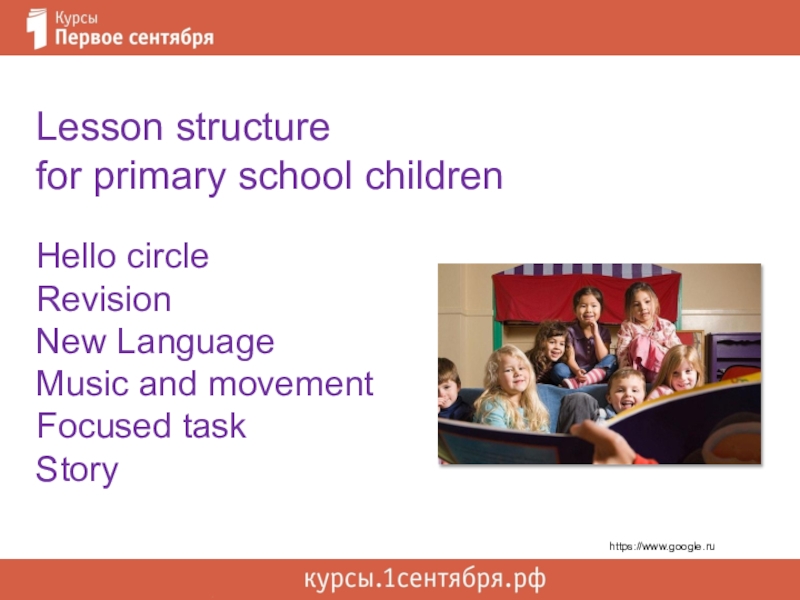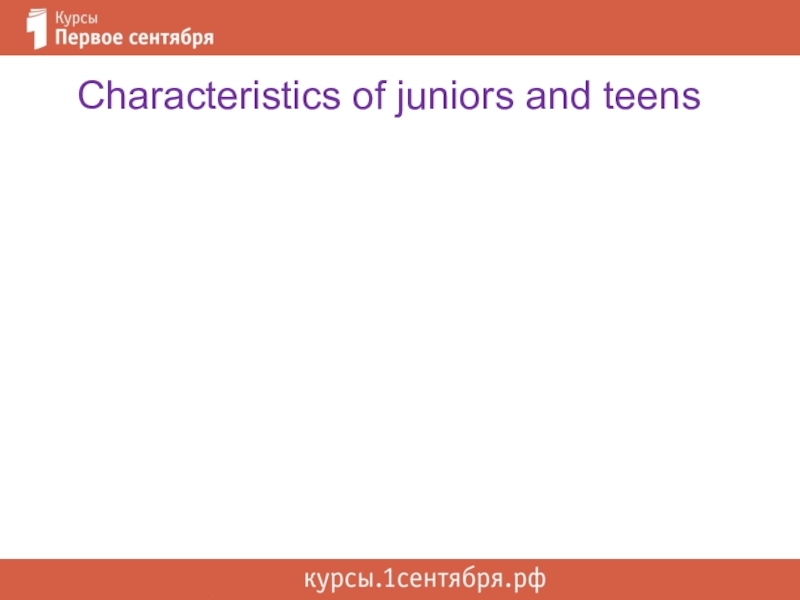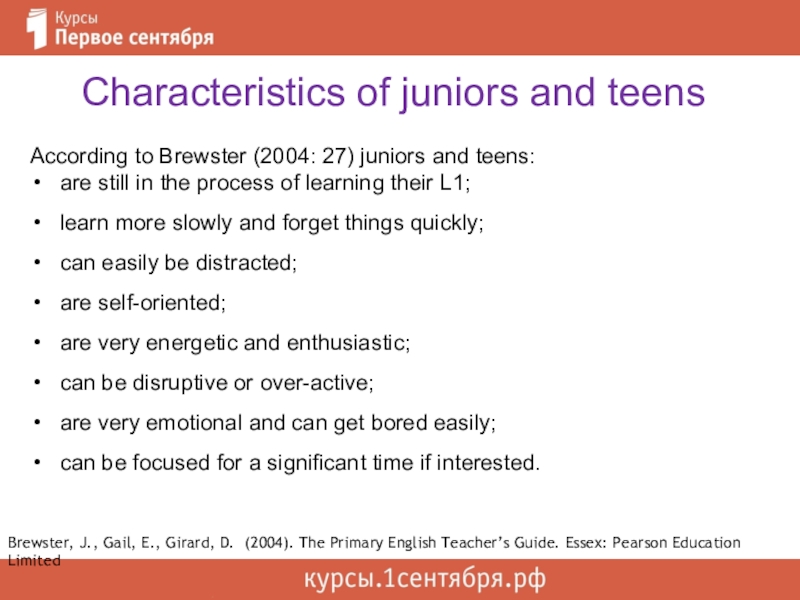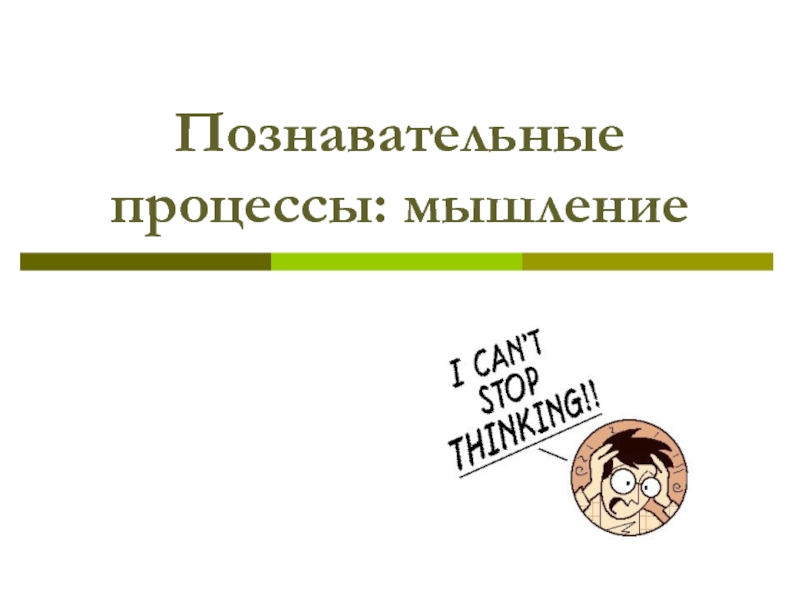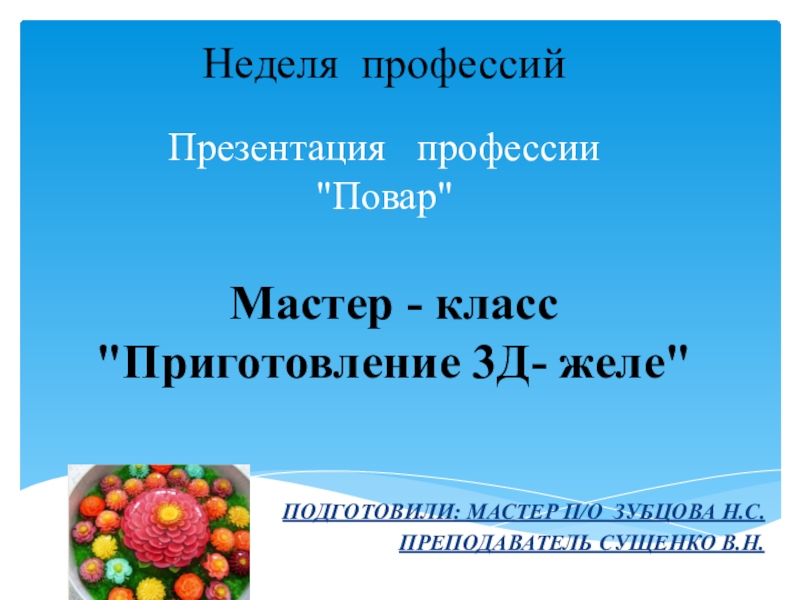Разделы презентаций
- Разное
- Английский язык
- Астрономия
- Алгебра
- Биология
- География
- Геометрия
- Детские презентации
- Информатика
- История
- Литература
- Математика
- Медицина
- Менеджмент
- Музыка
- МХК
- Немецкий язык
- ОБЖ
- Обществознание
- Окружающий мир
- Педагогика
- Русский язык
- Технология
- Физика
- Философия
- Химия
- Шаблоны, картинки для презентаций
- Экология
- Экономика
- Юриспруденция
Anna Kashcheeva Developing school children’s foreign language communicative
Содержание
- 1. Anna Kashcheeva Developing school children’s foreign language communicative
- 2. Introduction
- 3. akashcheeva@bkc.ruanna_kashcheeva@inbox.ruTrainings on Teaching Exam ClassesTrainings on Teaching
- 4. Have you ever taken a teacher training
- 5. Aims of the courseto highlight and raise
- 6. Aims of the first sessionto highlight and
- 7. https://www.google.ru
- 8. Слайд 8
- 9. Harmer, J. (2001). The Practice of English Language Teaching. Essex: Pearson Education Limited
- 10. Harmer, J. (2001). The Practice of English Language Teaching. Essex: Pearson Education Limited
- 11. https://www.google.ru
- 12. _______________motivation is when you engage in an activity in order to reach a certain goal
- 13. Extrinsicmotivation is when you engage in an activity in order to reach a certain goal
- 14. Intrinsicmotivation comes from within the individual.
- 15. Слайд 15
- 16. Слайд 16
- 17. Слайд 17
- 18. Слайд 18
- 19. https://www.google.ruHow can we influence learners’ motivation?
- 20. How can we influencelearners’ motivation?Ur, P., A Course in English Language Teaching, CUP, 2012
- 21. MotivationWhat do we have to do to motivate young learners?
- 22. Grab their attentionGet them interestedMake them feel
- 23. How to grab kids’ attention?
- 24. How to grab kids’ attention?a visual aida
- 25. AGE GROUPS
- 26. Characteristics of Young Learners
- 27. https://www.google.ruCharacteristics of Young Learners
- 28. still developing cognitively, linguistically, socially, emotionally and
- 29. Does it refer to kids or older students?https://www.google.ru
- 30. Слайд 30
- 31. How do children learn their first language?
- 32. How do children learn their first language?by
- 33. How do children learn their first language?by
- 34. How important is motivation in successful language
- 35. How important is motivation in successful language
- 36. ASSUMPTIONS ABOUT AGE AND LANGUAGE LEARNING1. Younger
- 37. Behaviourist view and audio-lingual approach
- 38. Behaviourist view and audio-lingual approachimitation, practice and
- 39. What can we do at the very
- 40. What can we do at the very beginning of the lesson? https://www.google.ru
- 41. https://www.youtube.com/watch?v=CSqVcTcQ_pc
- 42. How are you?I’m happy
- 43. How are you?I’m sad
- 44. How are you?I’m tired
- 45. How are you?https://www.google.ru
- 46. - How are you? - I’m ...
- 47. AnalysisWhy do we teach emotions?What other routines might we use in class?
- 48. AnalysisWhy do we teach emotions?What other routines might we use in class?
- 49. Reward Chart
- 50. Lesson structurefor primary school children
- 51. Lesson structurefor primary school children
- 52. Hello circleLesson structurefor primary school children
- 53. Hello circleLesson structurefor primary school childrenhttps://www.google.ru
- 54. https://www.google.ruHello circleRevisionLesson structurefor primary school children
- 55. Hello circleRevisionLesson structurefor primary school childrenhttps://www.google.ru
- 56. Hello circleRevisionNew LanguageLesson structurefor primary school childrenhttps://www.google.ru
- 57. Hello circleRevisionNew LanguageLesson structurefor primary school childrenhttps://www.google.ru
- 58. Hello circleRevisionNew LanguageMusic and movementLesson structurefor primary school childrenhttps://www.google.ru
- 59. Hello circleRevisionNew LanguageMusic and movementLesson structurefor primary school childrenhttps://www.google.ru
- 60. Hello circleRevisionNew LanguageMusic and movementFocused taskLesson structurefor primary school childrenhttps://www.google.ru
- 61. Hello circleRevisionNew LanguageMusic and movementFocused taskLesson structurefor primary school childrenhttps://www.google.ru
- 62. Hello circleRevisionNew LanguageMusic and movementFocused taskStoryLesson structurefor primary school childrenhttps://www.google.ru
- 63. Hello circleRevisionNew LanguageMusic and movementFocused taskStoryLesson structurefor primary school childrenhttps://www.google.ru
- 64. Hello circleRevisionNew LanguageMusic and movementFocused taskStoryHomework, goodbyeLesson structurefor primary school childrenhttps://www.google.ru
- 65. Characteristics of juniors and teens
- 66. Characteristics of juniors and teensAccording to Brewster
- 67. Characteristics of juniors and teensAlthough Penny Ur
- 68. Characteristics of juniors and teensAccording to Harmer
- 69. Teacher’s role
- 70. Teacher’s rolefind ways how to motivate studentscater
- 71. Set regular achievable goalsSet relevant homeworkRecord keepingReviewPeer teachingSelf-correctionProgress reportsTeaching Tips
- 72. Practical IdeasEnglish Language Teaching Global Blog athttps://oupeltglobalblog.com/category/young-learners/
- 73. Teaching tools, articles and free teaching resources athttps://www.teachingenglish.org.uk/teaching-kidsPractical Ideas
- 74. Flashcards and visuals athttps://ru.pinterest.comPractical Ideas
- 75. Free teaching resources athttps://supersimpleonline.com/free-teaching-resources/Practical Ideas
- 76. Summarysources of motivation and learning environmentage groups
- 77. TaskCreate a procedure of a lesson for secondary school children.https://www.google.ru
- 78. Скачать презентанцию
Слайды и текст этой презентации
Слайд 3
akashcheeva@bkc.ru
anna_kashcheeva@inbox.ru
Trainings on Teaching Exam Classes
Trainings on Teaching Young Learners
TKT 3
Modules preparation course
Слайд 4Have you ever taken a teacher training course in English?
When
was it?
Where was it?
Was it useful?
Слайд 5Aims of the course
to highlight and raise awareness of
some basic principles of teaching English using communicative approach
young learners’ characteristicsways of motivating young learners
how analyse and evaluate materials
some practical ideas for teaching young learners
Слайд 6Aims of the first session
to highlight and raise awareness of
sources of motivation and learning environment
age groups and
young learners’ characteristicsthe art of lessons planning for different age groups
developing learner autonomy
Слайд 9Harmer, J. (2001). The Practice of English Language Teaching. Essex:
Pearson Education Limited
Слайд 10Harmer, J. (2001). The Practice of English Language Teaching. Essex:
Pearson Education Limited
Слайд 12_______________
motivation is when you engage in an activity in order
to reach a certain goal
Слайд 20How can we influence
learners’ motivation?
Ur, P., A Course in English
Language Teaching, CUP, 2012
Слайд 22Grab their attention
Get them interested
Make them feel challenged
Keep them engaged
Praise
them
Use a variety of activities
Motivation
What do we have to do
to motivate young learners?Слайд 24How to grab kids’ attention?
a visual aid
a piece of music,
a song or a chant
a question
a story
a word or phrase
Слайд 28still developing cognitively, linguistically, socially, emotionally and physically
often have no
obvious reason for learning English
may not always have well-developed literacy
skills to support their learning of Englishmay often learn slowly and forget quickly
Characteristics of Young Learners
TKT YL, Handbook for teachers
Слайд 32How do children learn their first language?
by imitating adults
by experimenting
and trying out hypotheses about how the language works
both of
the aboveСлайд 33How do children learn their first language?
by imitating adults
by experimenting
and trying out hypotheses about how the language works
both of
the aboveСлайд 34How important is motivation in successful language learning?
not really important
the
most important factor
an important factor but not the only one
Слайд 35How important is motivation in successful language learning?
not really important
the
most important factor
an important factor but not the only one
Слайд 36ASSUMPTIONS ABOUT AGE AND LANGUAGE LEARNING
1. Younger children learn languages
better than older ones; children learn better than adults.
2. Foreign
language learning in school should be started at as early an age as possible.3. Children and adults learn languages basically the same way.
4. Adults have a longer concentration span than children.
5. It is easier to interest and motivate children than adults.
Слайд 38Behaviourist view and audio-lingual approach
imitation, practice and habit formation;
repetition in
the form of drills,
accuracy and the avoidance of errors;
positive
reinforcement and praiseSkinner B.F., Verbal behaviour, 1957
Слайд 39What can we do at the very beginning of the
lesson when we work with primary school children?
Слайд 56Hello circle
Revision
New Language
Lesson structure
for primary school children
https://www.google.ru
Слайд 57Hello circle
Revision
New Language
Lesson structure
for primary school children
https://www.google.ru
Слайд 58Hello circle
Revision
New Language
Music and movement
Lesson structure
for primary school children
https://www.google.ru
Слайд 59Hello circle
Revision
New Language
Music and movement
Lesson structure
for primary school children
https://www.google.ru
Слайд 60Hello circle
Revision
New Language
Music and movement
Focused task
Lesson structure
for primary school children
https://www.google.ru
Слайд 61Hello circle
Revision
New Language
Music and movement
Focused task
Lesson structure
for primary school children
https://www.google.ru
Слайд 62Hello circle
Revision
New Language
Music and movement
Focused task
Story
Lesson structure
for primary school children
https://www.google.ru
Слайд 63Hello circle
Revision
New Language
Music and movement
Focused task
Story
Lesson structure
for primary school children
https://www.google.ru
Слайд 64Hello circle
Revision
New Language
Music and movement
Focused task
Story
Homework, goodbye
Lesson structure
for primary school
children
https://www.google.ru
Слайд 66Characteristics of juniors and teens
According to Brewster (2004: 27) juniors
and teens:
are still in the process of learning their L1;
learn
more slowly and forget things quickly;can easily be distracted;
are self-oriented;
are very energetic and enthusiastic;
can be disruptive or over-active;
are very emotional and can get bored easily;
can be focused for a significant time if interested.
Brewster, J., Gail, E., Girard, D. (2004). The Primary English Teacher’s Guide. Essex: Pearson Education Limited
Слайд 67Characteristics of juniors and teens
Although Penny Ur suggests that teenage
students are in fact overall the best language learners (1996:286),
there is a belief that teenagers are often less motivated than both younger children and adults (Puchta 1999: 4).Puchta, H., Schratz, M. (1999). Teaching Teenagers. Model activity sequences for humanistic language learning. Essex: Pearson Education Limited
Ur, P. (1996). A Course in Language Teaching. Cambridge University Press
Слайд 68Characteristics of juniors and teens
According to Harmer (2001:39), young learners
need individual attention and approval from the teacher, whereas peer
approval might be essential for adolescents. Also, children usually have a low awareness of the social skills basic to cooperative interaction. What is more, they might present outright discipline problems being apathetic and unruly.Jeremy Harmer, The Practice of English Language Teaching, Pearson, 2001
Слайд 70Teacher’s role
find ways how to motivate students
cater for different learning
styles
provide varied interesting activities
create and exploit opportunities to
personalise and go at learners' pacehave clear rules
encouraging learners to perform better in class
promote learner autonomy

